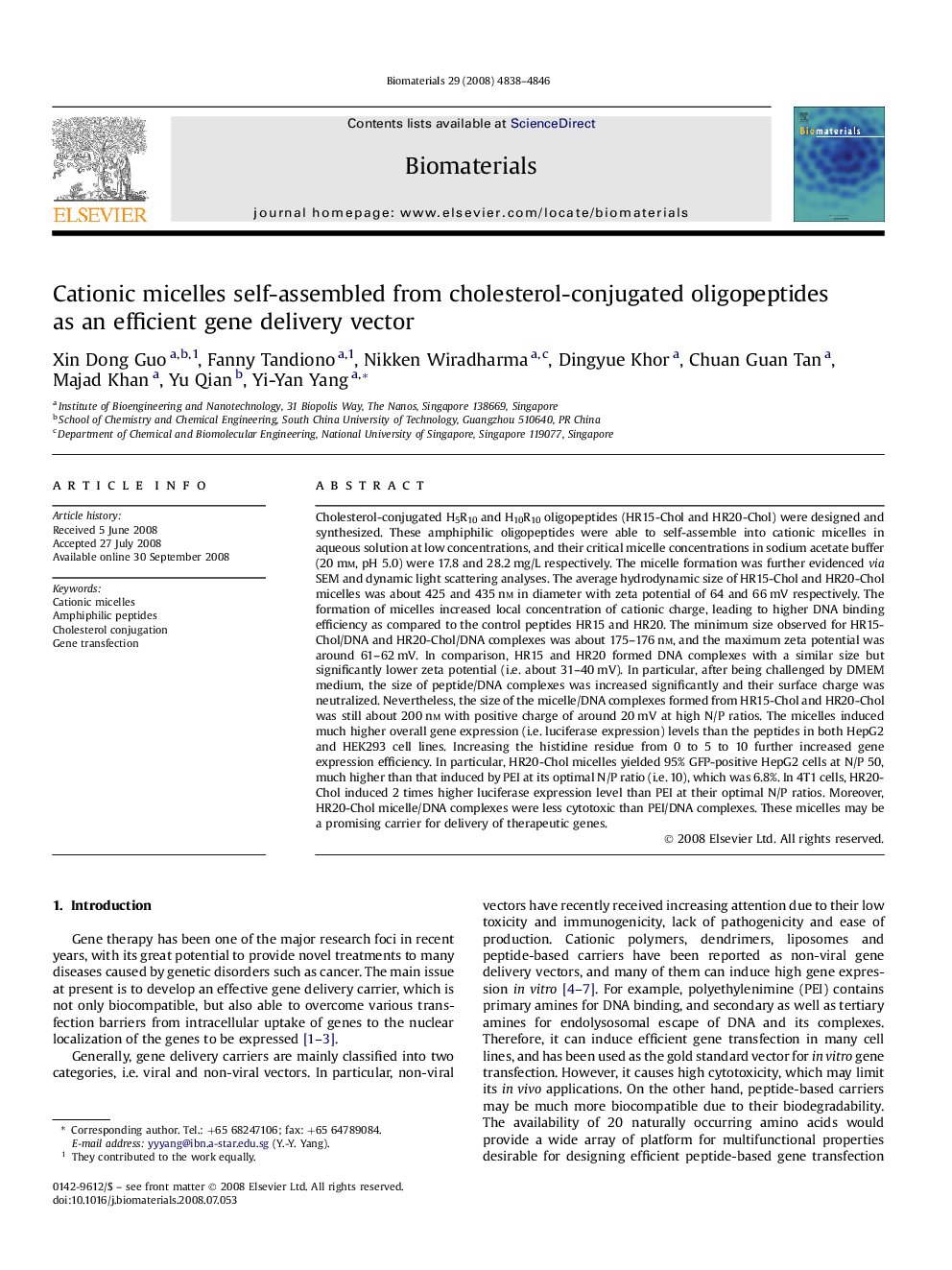| Article ID | Journal | Published Year | Pages | File Type |
|---|---|---|---|---|
| 9076 | Biomaterials | 2008 | 9 Pages |
Cholesterol-conjugated H5R10 and H10R10 oligopeptides (HR15-Chol and HR20-Chol) were designed and synthesized. These amphiphilic oligopeptides were able to self-assemble into cationic micelles in aqueous solution at low concentrations, and their critical micelle concentrations in sodium acetate buffer (20 mm, pH 5.0) were 17.8 and 28.2 mg/L respectively. The micelle formation was further evidenced via SEM and dynamic light scattering analyses. The average hydrodynamic size of HR15-Chol and HR20-Chol micelles was about 425 and 435 nm in diameter with zeta potential of 64 and 66 mV respectively. The formation of micelles increased local concentration of cationic charge, leading to higher DNA binding efficiency as compared to the control peptides HR15 and HR20. The minimum size observed for HR15-Chol/DNA and HR20-Chol/DNA complexes was about 175–176 nm, and the maximum zeta potential was around 61–62 mV. In comparison, HR15 and HR20 formed DNA complexes with a similar size but significantly lower zeta potential (i.e. about 31–40 mV). In particular, after being challenged by DMEM medium, the size of peptide/DNA complexes was increased significantly and their surface charge was neutralized. Nevertheless, the size of the micelle/DNA complexes formed from HR15-Chol and HR20-Chol was still about 200 nm with positive charge of around 20 mV at high N/P ratios. The micelles induced much higher overall gene expression (i.e. luciferase expression) levels than the peptides in both HepG2 and HEK293 cell lines. Increasing the histidine residue from 0 to 5 to 10 further increased gene expression efficiency. In particular, HR20-Chol micelles yielded 95% GFP-positive HepG2 cells at N/P 50, much higher than that induced by PEI at its optimal N/P ratio (i.e. 10), which was 6.8%. In 4T1 cells, HR20-Chol induced 2 times higher luciferase expression level than PEI at their optimal N/P ratios. Moreover, HR20-Chol micelle/DNA complexes were less cytotoxic than PEI/DNA complexes. These micelles may be a promising carrier for delivery of therapeutic genes.
